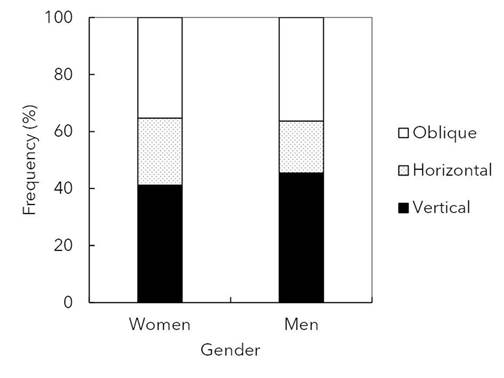Introduction
Knowledge about plants in the Amazon is a highly dynamic field, and intercultural exchanges are numerous, even if little documented (Cámara-Leret et al., 2014). Local medicinal plants are commonly used as tinctures, syrups, teas, infusions, fluid extracts or powders to treat illnesses (Couly, 2013; Da Silva et al., 2018; Rodrigues, 2006; Saltos et al., 2016; Sarquis et al., 2019), effectively shared by thousands of people all over the Amazon (Cámara-Leret et al., 2014; Doyle et al., 2017; Roersch, 2010). In fact, cultural factors can be the basis for diffusion of these practices, explaining the structuring of this knowledge in local communities (Menendez-Baceta et al., 2015). Such cultural factors may include, for instance, the curative or cultural significance given to a plant, beliefs, religion, historical context, variations in language, social networks etc. (Menendez-Baceta et al., 2015).
Traditional ecological knowledge (TEK) is defined as “a cumulative body of knowledge, practice, and belief, evolving by adaptive processes and handed down through generations by cultural transmission, about the relationship of living beings (including humans) with one another and with their environment” (Berkes, 2008, p. 7). This knowledge constitutes a dynamic process that, usually, represents an adaptation to changes in environmental and climatic conditions over time (Gómez-Baggethun & Reyes-García, 2013; Pearce et al., 2015), and increases resilience of socio-ecological systems (Hosen et al., 2020; McMillen et al., 2017; Stori et al., 2019).
The mechanisms to maintain traditional knowledge depend on multiple factors, including ecosystem properties, social and economic factors (Paniagua-Zambrana et al., 2016). For example, Mota et al. (2021) showed that knowledge of medicinal plants can be influenced by socioeconomic factors, contributing to form different knowledge patterns that affect the cultural transmission of TEK in a riverine community from the Lower Amazon.
In the adaptive processes of traditional and non-traditional communities, knowledge and culture are changeable and dynamic. However, maintaining core knowledge, practices and beliefs that characterize a particular population is fundamental for cultural and ecological resilience, through intergenerational cultural transmission. This is “the process of acquiring of behaviors, attitudes, or technologies through imprinting, conditioning, imitation, active teaching and learning or combinations of these” (Cavalli-Sforza et al., 1982). According to Soldati (2016, p. 236), “cultural transmission allows a person to acquire information throughout their life and from many models in addition to parents”. Although the process of cultural adaptation may preserve core knowledge, practices, and beliefs within a community, it likely entails the loss of certain practices and conceptions that have gradually become less relevant to that group across generations.
Studies on traditional knowledge contribute to understanding biodiversity and to generating conservation and resource management strategies (Cristancho & Vining, 2009; Muller-Schwarze, 2006). Therefore, these researches may support the discussion of public policies aimed at the conservation of ecological and cultural biodiversity (F. F. de Morais et al., 2009; R. F. de Morais et al., 2015), especially in protected areas (Arruda et al., 2018).
Transmitting and maintaining TEK is essential to preserve cultural and collective identity, to social promotion (Brookfield et al., 2003), and to face up environmental disturbances (Ruiz-Mallén & Corbera, 2013). Beyond a utilitarian view of ethno-biological studies, comprehending TEK and its intergenerational transmission can underpin processes and practices aimed at social justice and recentering knowledge that is often marginalized by dominant and imposing modern models, disconnected from local communities and their cosmovisions (McAlvay et al., 2021), particularly regarding medicinal plants. Most ethnobotanical studies in the Amazon and other domains focus on plant species and their uses (Amorozo & Gély, 1988; Coelho-Ferreira, 2009; Rodrigues, 2006; Vásquez et al., 2014), while the process of knowledge transmission receives little or no attention. In this context, the present work investigates the cultural transmission process of TEK on medicinal plants in a traditional riverine community in the Brazilian Amazon. We hypothesize that different modes of transmission of TEK act in the community, and women are the main local transmitters of TEK.
Method
The Vila Franca community
The study was carried out in the Vila Franca community (Figs. 1 and 2), located at the municipality of Santarém, within the Tapajós-Arapiuns Extractive Reserve (Resex), state of Pará, Northern region of Brazil. Vila Franca is located between the communities Maripá, on the Tapajós River, and Vila do Anã, on the Arapiuns River (2° 20’ 43.64” S, 55° 1’ 32.64” W). The Vila Franca community has 74 families, with approximately 298 residents (Projeto Saúde e Alegria, 2012).
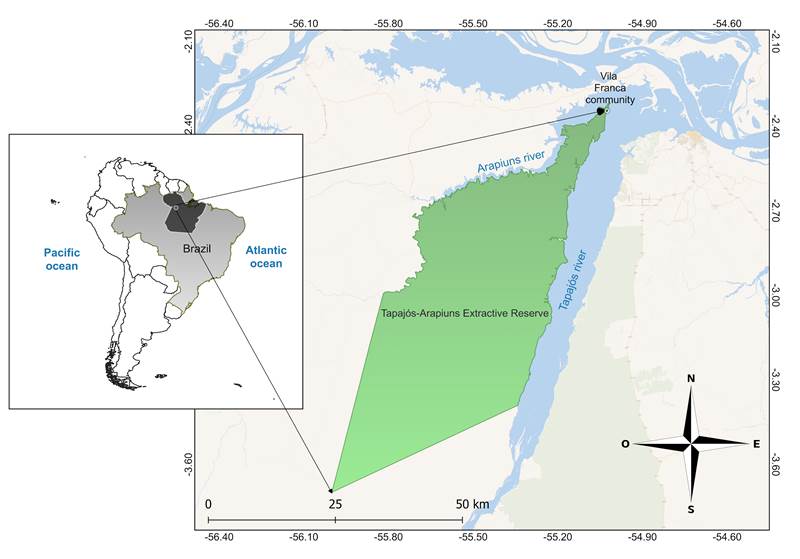
(Source: Map by Victor Leon R. Araújo).
Fig. 1 Location of the riverine community of Vila Franca, Brazilian Amazon.
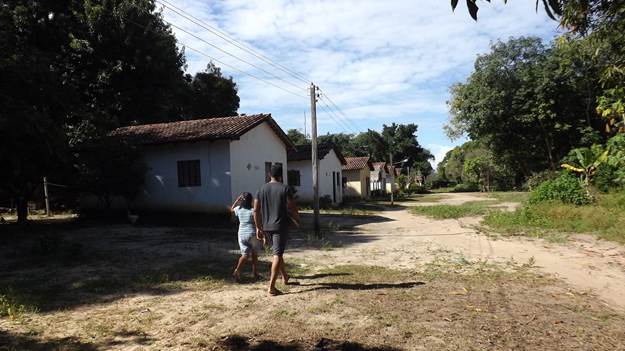
Fig. 2 Typical dwellings of the riverine community of Vila Franca in the Tapajós-Arapiuns Extractive Reserve, Pará State, Brazil. (Source: Authors’ private collection, August, 2019).
The regional climate is mega-thermal continental equatorial of central Amazon. The predominant vegetal typology is the ombrophilous dense forest, in addition to phytophysiognomy with savanna patches; still finding igapós - permanently flooded areas -, secondary vegetation and pasture areas used in livestock (Instituto Chico Mendes de Conservação da Biodiversidade, 2014).
Culturally, at Vila Franca community, indigenous aspects are still persistent and the tradition of making cassava flour; tarubá, caxará, manicuéra - cassava derivatives -, handicrafts and cultural dances remains (Projeto Saúde e Alegria, 2012). The streets are well demarcated and the houses, which used to be all covered and surrounded by straw and plump wood, with earthen floor, are gradually being replaced by masonry houses (Projeto Saúde e Alegria, 2012).
Agroextractivism is the main economic activity of the community. Most of Vila Franca’s families survive from jobs such as the production of cassava flour, corn or tapioca starch. The residents sell utilitarian handicrafts, such as tipiti - artifact used to press grated cassava -, paneiro - handicraft basket -, tucumã basket - Astrocaryum aculeatum G. Mey. - and biojewels. From the forest, they get hunt meat such as lowland paca, agouti, deer, jaguar, monkeys; furthermore, they extract products as straw, firewood, vines, jutaí-cica - Hymenaea courbaril L. -, mauve, among others.
The region has agroforestry yards, contributing to food security and to the health of community members. Agroforestry yards are rich in medicinal species and maintain the traditional knowledge associated to them. Besides being spaces for growing useful plants, backyards are used to raise small animals and as a space for leisure and socialization of dwellers (Projeto Saúde e Alegria, 2012). In the community, there is a permanent health post with a community health agent and an attendant. This health post provides basic healthcare medications, which are sometimes insufficient to meet local demands. Regularly, the community receives visits from the Programa Saúde da Família (Family Health Program) through the Abaré hospital-school vessel (Projeto Saúde e Alegria, 2012), which provides mobile healthcare services to riverside communities in Western Pará. This initiative operates in collaboration with the municipal government, university, and local non-governmental organizations. This significantly reduces the rate of commutes to urban centers, such as Santarém, due to more complex health procedures. In Vila Franca, there are traditional midwives and dwellers who manufacture medicinal natural products, such as garrafadas - drinks combining medicinal plants - and teas; they also produce soap and intimate soap, as part of the Projeto de Remédios Naturais - Natural Remedies Project (Projeto Saúde e Alegria, 2012). As an initiative of the Pastoral da Saúde (Health Pastoral), affiliated with the Catholic Church, the program features a medicinal plant nursery within the community, primarily overseen by local women. Through workshops, these women learned the exact dosages required to prepare each medication according to the needs presented by the community members (Tokarnia, 2016).
Data gathering
The data were collected from an intentional non-probabilistic sampling, by which 43 informants were indicated using the Snowball sampling technique (Bailey, 1994). Thus, a first specialist recognized by the community leader indicates one or more people whom he/she believes also possess knowledge about medicinal plants, and so on, until saturating all the holders of that knowledge in the community (Albuquerque et al., 2010).
Initially, we performed the Ecological Insertion in the community (Milles & Huberman, 1984) from June 2017 to April 2018, in order to establish proximal processes between the main researcher and the community leadership to present the project, obtain consent to work in the area, as well as to bring closer the researchers to interlocutors of the study.
From May to November 2018, semi-structured interviews (Albuquerque et al., 2010) were conducted with the people appointed. People over 18 years old who live in the same house of the informants appointed and who were present during the interviewer's visit were also interviewed. The interview script consisted of open questions related to the process of knowledge transmission about medicinal plants, seeking to understand questions on How and From Whom the interviewee learned information about such plants. The main question addressed during the dialogue with each interviewee was: "How did you acquire knowledge about medicinal plants?" Through occasional interventions by the interviewer to sustain the conversation, this pivotal inquiry yielded the primary data presented and discussed here. Although the present study did not intend to list the plants and their uses in the community - a total of 312 plants were indicated by interviewed dwellers -, these data will comprise a further publication from the project that includes this article.
Forty-three people were interviewed, being 25 women and 18 men, between 18 and 80 years old, representing 14.42% of the community population (Table 1). For purposes of analysis, and taking into account age groups approximate to those ranges adopted by international entities (OECD, Unicef etc.), three age categories were distinguished: youths (18-29 years; M = 22.64; SD = 3.50), adult (30-59 years; M = 49.13; SD = 8.53) and elderly (≥ 60 years; M = 70.06; SD = 7.47). Thus, the sample was composed of 11 youths, 15 adults and 17 elderly people. Most of the interviewees have a low level of formal education, a monthly family income below R$ 1,000 Brazilian Reais - the minimum wage in Brazil at the time of data collection was R$ 954.00 - and have been residing in the Vila Franca community for 30 years or more (Table 1).
Table 1 Socioeconomic profile of the research participants in the Vila Franca community, Brazil.
| Socioeconomic Variable | N (%) |
|---|---|
| Gender | |
| Man | 18 (41.86) |
| Woman | 25 (58.14) |
| Age (Category, Year Range) | |
| Youths, 18-29 | 11 (25.58) |
| Adult, 30-59 | 15 (34.88) |
| Elderly, ≥ 60 | 17 (39.54) |
| Highest Level of Formal Education | |
| Elementary Education, incomplete | 25 (58.14) |
| Elementary Education, complete | 8 (18.60) |
| High School | 9 (20.93) |
| Higher Education | 1 (2.33) |
| Monthly Family Income (BRL) | |
| < 400.00 | 15 (34.88) |
| 400.00-1,000.00 | 24 (55.82) |
| > 1,000.00 | 4 (9.30) |
| Length of Residence in the Community (years) | |
| < 10 | 3 (6.98) |
| 10-30 | 14 (32.56) |
| 31-50 | 11 (25.58) |
| > 50 | 15 (34.88) |
Data analysis
In order to identify and characterize the cultural transmission process of TEK in the community, the following variables were categorized: transmission modes for the community in general; transmission modes between genders; transmission modes between age categories; and, finally, who were the main transmitters.
This research adopts the cultural transmission model proposed by Cavalli-Sforza and Feldman (1981), which is identified in three fundamental modes: vertical (from parents to their progeny, occurring within the same genealogy), horizontal (among any individuals from a same generation, with limited kinship relationship) and oblique (between members of a generation to members of the subsequent or previous generation, except their children or direct ancestors - teachers, healers, shaman). Relative frequencies (%) of interviewed' responses for all categories are provided. The chi-square tests for adherence and independence test were used to analyze the frequency of the categories (P < 0.05) (Conover, 1999). Given that the statistical analysis relied on data obtained through Snowball sampling, we emphasize that the significant differences belong exclusively to the group of participants. Therefore, the results are not generalizable beyond the sample.
Ethics approval
The research was conducted in accordance with the Declaration of Helsinki, and its protocol was approved by the Ethics Committee of the Pará State University (CEP-UEPA), Campus XII - Tapajós, Santarém, PA, Brazil (CAAE 86066918.2.0000.5168, April 16th, 2018). All interlocutors were informed about the research goals and gave their informed consent for inclusion and publication before they participated in the study.
The Chico Mendes Institute for Biodiversity Conservation (ICMBio, Brazil) authorized access to the Tapajós-Arapiuns Extractivist Reserve for scientific purposes (code 62993-1, April 30th, 2018). The research was also registered in the National System of Genetic Resource Management and Associated Traditional Knowledge - SisGen, Brazil (code AC3A561, Nov 5th, 2018).
Results
Cultural transmission modes of TEK about medicinal plants
Community members acquire TEK on medicinal plants mainly from parents, that is, vertical mode of cultural transmission (42.86%) was the main one observed in the community (Fig. 3). Oblique transmission represents 35.71% of the responses, demonstrating that the interlocutors also learn from members of a previous generation, excepting their direct ancestors, such as aunt, mother-in-law, and teacher or other older individuals in general. Furthermore, 21.43% of the respondents acquire this knowledge from other individuals of the same generation - horizontal transmission. The three modes of transmission have a significant role in the transmission of TEK on medicinal plants in the interviewed group, as no significant differences were revealed (χ2 = 4; P = 0.353) when compared one to each other.
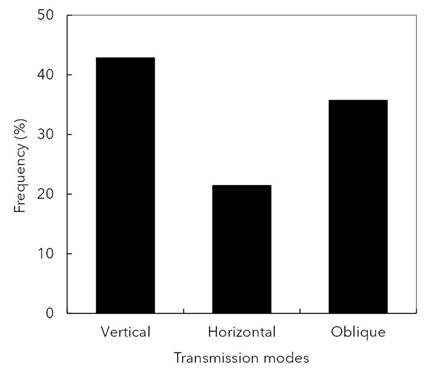
Fig. 3 Cultural transmission modes of Traditional Ecological Knowledge about medicinal plants in Vila Franca.
Vertical, horizontal and oblique transmissions demonstrate to be equivalent in the acquisition of TEK for the three age categories. When such modes of cultural transmission among the age categories are analyzed (Fig. 4), no significant differences are registered (χ2 = 51.832; P = 0.269). For youth, oblique transmission (50%) is the main source of knowledge, followed by vertical transmission (42.86%). Horizontal transmission (7.14%) for this age group is less important in the cultural transmission process. It demonstrates that family members tend to influence younger people from the interviewed group more in the knowledge acquisition process.
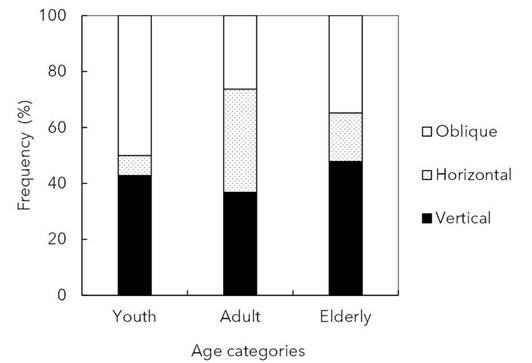
Fig. 4 Cultural transmission modes of Traditional Ecological Knowledge among the age categories in Vila Franca.
For adults, vertical (36.84%) and horizontal (36.84%) transmissions are equivalent in the knowledge acquisition process. Meanwhile, oblique transmission prevailed in 26.32 % of the responses. For the elderly, the main source of knowledge came from vertical transmission (47.83%), followed by oblique (34.78%) and horizontal (17.39%) transmissions.
A proportional relation to the cultural transmission modes between women and men (χ2 = 0.23957; P = 0.887, Fig. 5) was observed. Women and men acquire TEK on medicinal plants mainly by vertical transmission (41.18% and 45.45%, respectively), followed by oblique transmission - 35.29% for women and 36.36% for men. Meanwhile, horizontal transmission seems to be less representative - 23.53% for women and 18.18% for men.
Transmitters of TEK about medicinal plants
For the community in general, the interviewed dwellers mentioned different people related to the transmission of TEK involving medicinal plants, both in familial as in extrafamilial spheres (Fig. 6). Significant differences are registered when comparing the frequencies of the mentioned transmitters (χ2 = 58.016; P < 0.01). 37,71% cited both parents separately, as transmitters of this type of knowledge. However, mothers proved to be the main transmitters in the community, according to 31.15% of the interviewed residents. Then, the main transmitters are the women who participate in the Projeto de Remédios Naturais in the community (16.39%).
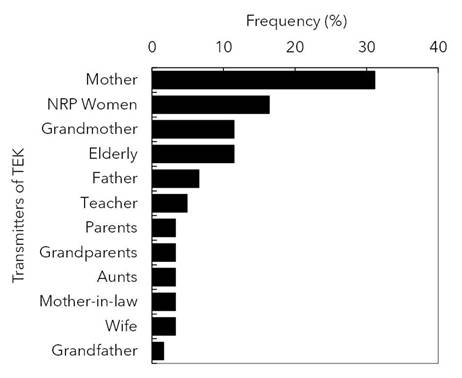
Fig. 6 Transmitters of Traditional Ecological Knowledge (TEK) on medicinal plants at Vila Franca. Caption: NRP: Natural Remedies Project (Projeto de Remédios Naturais). TEK: Traditional Ecological Knowledge.
In the familial context, parents (3.28%), grandparents (3.28%) and aunts (3.28%) were mentioned as transmitters of TEK. 19.67% mentioned, separately, other family members, such as grandfather, grandmother, mother-in-law and wife. In the extrafamilial context, 16.39 % of the interviewees cited women from the Projeto de Remédios Naturais. The interlocutors also mentioned the teacher (4.92%) and the elderly category, except those belonging to the family (11.48%). Mothers are the main transmitters of TEK between youth (29.41%), adults (30%) and the elderly (33.33%) (Fig. 7).
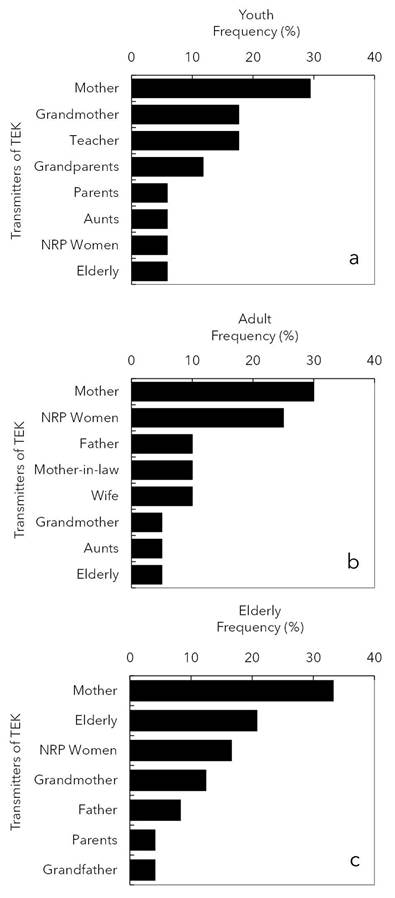
Fig. 7 Transmitters of Traditional Ecological Knowledge (TEK) on medicinal plants for the youth (A), adult (B) and elderly (C) age categories in Vila Franca. Caption: NRP: Natural Remedies Project (Projeto de Remédios Naturais). TEK: Traditional Ecological Knowledge.
Statistically comparing the transmitters mentioned by the youth, no significant differences were registered (χ2 = 7; P = 0.429). For youth, besides mothers (29.41% of responses), the categories grandmother (17.65%) and teacher (17.65%) were also representative, showing that they are important transmitters for this age group. The adults interviewed, as well as the young people, mentioned mothers (30%) as the main transmitters of TEK, followed by women from the Projeto de Remédios Naturais (25%). No significant differences were recorded in this group (χ2 = 10.4; P = 0.167). Finally, the elderly also mentioned mothers (33.33%) as the main sources of knowledge, followed by the elderly category (20.83%) and women from the Projeto de Remédios Naturais (16.67%), without significant differences (χ2 = 11; P = 0.884).
Regarding the cultural transmission of TEK on medicinal plants between genders (Fig. 8), when we compare the transmitters mentioned by men, statistically significant differences were observed (χ2 = 20; P = 0.001), as well as among the transmitters categorized by women (χ2 = 24; P = 0.004).
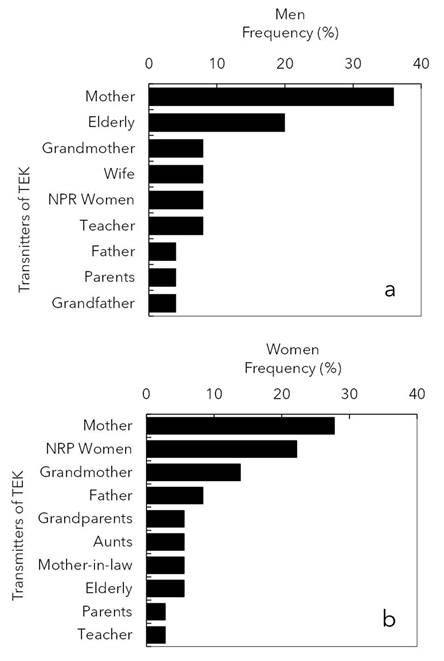
Fig. 8 Transmitters of Traditional Ecological Knowledge (TEK) on medicinal plants between men (A) and women (B) in Vila Franca. Caption: NRP: Natural Remedies Project (Projeto de Remédios Naturais). TEK: Traditional Ecological Knowledge.
The men interviewed mentioned mothers (36%) as the main transmitters of knowledge in the community, followed by people from older generations who are not relatives, the elderly (20%). Other transmitters were mentioned, such as father, parents and grandfather, ranging from 4% to 8% among men. The women interviewed also have mothers (27.78%) as the main transmitters; however, the women from the Projeto de Remédios Naturais (22.22%) are the second transmitter. The grandmother category (13.89%) also proved to be important in cultural transmission to women.
Discussion
The three modes of transmission disseminate traditional knowledge on medicinal plants in the interviewed group from the Vila Franca community, which demonstrate equivalent importance in possibly maintaining this knowledge. Calvet-Mir et al. (2016) observed equal proportions between vertical and horizontal transmission modes to the sources of knowledge acquisition on medicinal plants in four rural villages. Copying from peers is advantageous, in certain situations, because it allows acquiring apparently useful information, freeing the person from individual production of knowledge, a highly expensive alternative process (Laland, 2004; Mesoudi, 2011). However, we consider that everyday innovations can be driven by both internal and external factors within a community, such as resource scarcity, restrictive costs, among others. The participants in this study possess recognized knowledge about medicinal plants, according to community members. This prevents us from asserting that a lack of innovation is not the norm among the general population. Additionally, Cavalli-Sforza and Feldman (1981) discuss the probability that a person can adopt a trait as a result of its contacts with other individuals of the social group. The interviewed dwellers in Vila Franca acquire their TEK about medicinal plants from different social sources.
Regarding the interviewed sample in Vila Franca, TEK is most often transmitted vertically through the family, mainly by mothers. In this family aspect, mothers play a predominant role as transmitters. Similarly, Eyssartier et al. (2008) also reported mothers as the main sources of transmission in two communities in northwestern of Argentine Patagonia. In a semiarid region in Minas Gerais, Soldati et al. (2015, p. 1) also observed mothers as "the most common models (knowledge sources)" in knowledge vertical transmission strategy.
Several researchers have shown that TEK is transmitted mainly by the vertical mode, since parental generations play a very important role in disseminating knowledge, since the proportion of knowledge transmitted within this group is higher and contact is more frequent (Calvet-Mir et al., 2016; Haselmair et al., 2014; Hewlett et al., 2002; Turreira-García et al., 2015). However, Brito et al. (2019) suggest that other factors than just vertical transmission may favor cultural transmission between relatives of the same generation.
Apart from family members acting as transmitters, the extrafamilial sphere was also important. In addition to family relationships, adults tend to be influenced by other people of the same generation, such as friends, neighbors or other community members who exchange knowledge related to medicinal plants, on a daily basis. Here, the horizontal transmission by women who manufacture natural remedies based on medicinal plants deserves to be highlighted in the Vila Franca community.
Other studies emphasize women’s participation in projects and practices that aims natural resources management, due to their high knowledge of the theme (Bingeman, 2001). Therefore, the present work emphasizes that learning continues into adulthood through horizontal transmission. This shows that extrafamilial contributions are important for the interviewed participants from Vila Franca, in addition to indicate that TEK is acquired within the family, at the first moment, and subsequently it goes through transformations, as a consequence of relations with other local residents, who exchange knowledge and practices on the use of medicinal plants on a daily basis. This knowledge acquired horizontally may or may not agree with what they learned from their families. Horizontal transmission has also been observed in other communities, such as those surveyed by Calvet-Mir et al. (2016).
The knowledge acquired by the oldest, through older generations, by means of oblique transmission was also important for the interviewed local residents. The elderly people in the community end up limiting the exchange of knowledge with people from the same generation by staying longer in their homes. This results in less horizontal transmission observed in this group. Generally, older dwellers have greater knowledge about local biodiversity.
Women - mother, grandmother, aunts, mother-in-law, wife, and Projeto de Remédios Naturais’ women - have been described by the interviewees as the main transmitters of TEK in the community. These results demonstrate the closeness of relationships among women, resulting in a greater flow of TEK among them. This occurs both within the family and in the community relations, such as, for example, in the work with natural remedies performed by women. According to the literature, women have been described as having more knowledge than men in relation to some natural resources, as in the case of medicinal and food plants (Torres-Avilez et al., 2014). Additionally, Costa et al. (2021) found greater network connection and information sharing among woman in a Brazilian suburban community. The authors assume that several central individuals probably "provide the cohesion and maintenance of TEK in the community" (Costa et al., 2021, p. 1). From the interviewer dwellers, the data indicate a trend in which women contribute to transmitting and preserving TEK within the family context through vertical transmission, as well as in the daily activities of the community.
This can be explained through the existing local labor division. Women have greater contact with medicinal plants due to the care provided by them in cases of illness in the family and in the management of these resources present in the backyards of their homes. Historically, medicinal knowledge and practices belonging to groups deemed subordinate, such as indigenous peoples and quilombolas, have been discredited as part of a hegemonic colonial process that seeks to undermine local traditional knowledge in favor of dominant exogenous models. This becomes more pronounced when it comes to the gender perspective for women and represents a threat to the preservation of cultural identity and the knowledge held by this group, in addition to ignoring that women may contribute to the self-management of local medical and therapeutic systems (Cano Contreras & Salazar Guarán, 2022). In this study, we assume that the Projeto de Remédios Naturais can favor or amplify the TEK in the Vila Franca community, grounded in women's local knowledge. That project constitutes an interesting object for further ethnobiological research.
According to Calvet-Mir et al. (2016, p. 567) , “simultaneous reliance on different modes of transmission (i.e., vertical, oblique, horizontal, and retroactive) ensures flexibility in multiple learning pathways, giving the opportunity to shift learning from one source to another, according to the need”. Additionally, this dependency expands the basis of collective knowledge and increases the capacity to innovate and maintain different knowledge systems and structures of interpretation. For future research, qualitative evidence may provide a more comprehensive understanding of the importance of each type of transmission and age group dynamics in the local cultural transmission modes of TEK concerning medicinal plants in Vila Franca.
Conclusions
The findings point out the transmission process of TEK on medicinal plants in the Vila Franca community, specifically from the perspective of the interviewed group in this study. In this context, knowledge about medicinal plants is present and it seems to be influenced by familial and extrafamilial relationships, as through the Projeto de Remédios Naturais. However, we refrain from stating that statistically non-significant differences in certain analyses explicitly indicate their nonexistence, as they may stem from the small sample size resulting from the Snowball technique.
The different paths through which the information about medicinal plants is transmitted contribute to making local socio-ecological systems more resilient. Therefore, supporting and promoting the maintenance of these practices seems to be a priority, including vegetable gardens and other types of activities, informally and officially. Medicinal plants comprise a heterogeneous group because of the diseases they treat and who treats them, the places where they grow, their biological type, the fact that they are planted or spontaneous, domesticated or wild, etc. Therefore, further ethnographic studies will most likely reveal nuances of which categories of these medicinal plants are being lost or transformed under the influence of factors such as urbanization, schooling, trade, and changes in interpersonal networks.











 nueva página del texto (beta)
nueva página del texto (beta)

